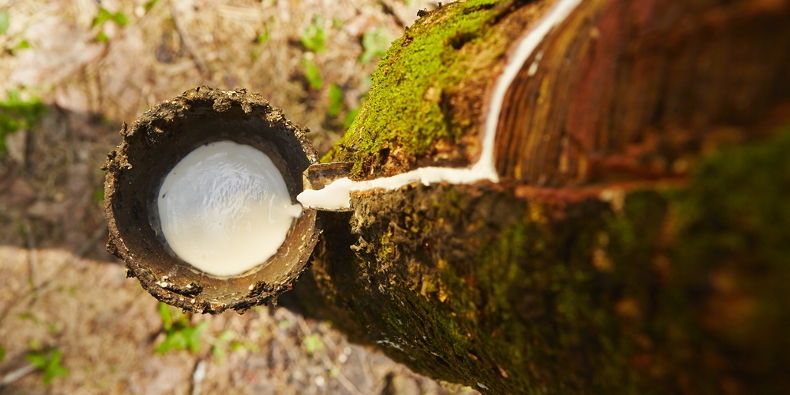10 Facts about Natural Rubber

We have previously reported about various elastomeric materials and their properties as well as the applications they can be used for in the field of mechanical engineering. This article is in reference to the raw material natural rubber or caoutchouc. For example, did you know that its natural color is white? Or how many tons are produced and processed every year? Everybody knows caoutchouc, but very few are familiar with its properties and for which applications it can be used. Here are 10 facts about natural rubber you may have not heard about before.
In 1495 Christopher Columbus was the first white human who watched Indians in Haiti play with an elastic ball. But it was many years later that Charles Marie de la Condamine brought natural rubber to Europe from an expedition to Peru and Ecuador.
- Natural rubber originally comes from the South American tree ‘Hevea Brasiliensis’ which belongs to the euphorbia family. These trees reach a height of 15 to 30 meters and have a trunk diameter of up to one meter.
- The natural color of caoutchouc is white and the name is derived from the Indian words ‘cao’ and ‘ocho’, which means “the drops of a tree“.
- Some people are allergic to this natural material. For this reason, the protein components that can cause such an allergy are frequently filtered out during industrial processing.
- ’Black carbon’, a reinforcing filler, is what makes car tires black. The more intensely the filler is linked with the natural rubber, the higher the strength of the rubber.
- No natural rubber – no newspaper. Rubber-coated rollers render this possible. We have also become dependent on natural rubber in the textile and food industry.
- In 1830 the worldwide consumption of natural rubber amounted to 150 tons. In 1856 this had already increased fiftyfold and tallied about 7,000 tons approximately.
- Nowadays, almost 23 million tons of natural rubber are produced and processed worldwide. About 60 % of that amount is synthetic rubber.
- Synthetic rubber is mainly produced from the raw material petroleum, but researchers have begun exploring the use of alternative and sustainable raw materials with, for instance, rapeseed oil and the sap of dandelions.
- The first rubber factory was founded near Paris in 1803. At that time, they mainly produced suspenders and garters.
Of course, there is much more that can be learned about the renewable raw material ‘natural rubber’. It has a long history and has already been used in the past for versatile applications. Today, this raw material has become an indispensable part of our daily life. In coupling production, natural rubber is suitable for use to only a limited extent. Though it is highly elastic, it is not appropriate for most applications on account of its poor resistance to temperatures. Nevertheless, it has many other applications in the field of mechanical engineering, such as conveyors, drive pulleys, machine bearings and diaphragms.
Source


Comment